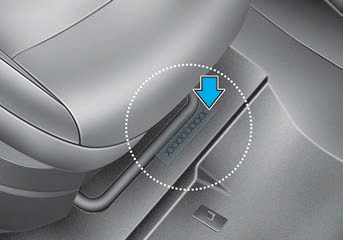Hyundai Venue: Charging System / Description and operation
Hyundai Venue (QX) (2020-2025) Service Manual / Engine Electrical System / Charging System / Description and operation
| Description |
The charging system included a battery, an alternator with a built-in regulator,
and the charging indicator light and wire.
The Alternator has eight built-in diodes, each rectifying AC current to DC current.
Therefore, DC current appears at alternator "B" terminal.
In addition, the charging voltage of this alternator is regulated by the battery
voltage detection system.
The alternator is regulated by the battery voltage detection system. The main
components of the alternator are the rotor, stator, rectifier, capacitor brushes,
bearings and V-ribbed belt pulley. The brush holder contains a built-in electronic
voltage regulator.
| Alternator Management System |
Alternator management system controls the charging voltage set point in order
to improve fuel economy, manage alternator load under various operating conditions,
keep the battery charged, and protect the battery from over-charging. ECM controls
generating voltage by duty cycle (charging control, discharging control, normal
control) based on the battery conditions and vehicle operating conditions.
The system conducts discharging control when accelerating a vehicle. Vehicle
reduces an alternator load and consumes an electric power form a battery.
The system conducts charging control when decelerating a vehicle. Vehicle increases
an alternator load and charges a battery.
 Repair procedures
Repair procedures
On-vehicle Inpection
•
First of all, check for DTCs...
Other information:
Hyundai Venue (QX) (2020-2025) Service Manual: Specifications
Specification Pressure [kPa (kgf/cm², psi)] Output Voltage (V) 20.0 (0.20, 2.9) 0.79 46.7 (0.47, 6.77) 1.84 101.3 (1.03, 14.7) 4...
Hyundai Venue (QX) (2020-2025) Service Manual: Troubleshooting
Troubleshooting Problem Symptoms Table Use the table below to help you find the cause of theproblem. The numbers indicate the priority of the likecause of the problem. Check each part in order. If necessary, replace these parts...
Categories
- Manuals Home
- 1st Generation Venue Owners Manual
- 1st Generation Venue Service Manual
- Check Tire Pressure
- Operating Door Locks from Outside the Vehicle
- System Setting and Activation
- New on site
- Most important about car
Vehicle Identification Number (vin), Vehicle Certification Label
Vehicle Identification Number (vin)

Frame number
Copyright © 2025 www.hvenueqx.com

